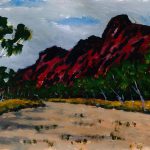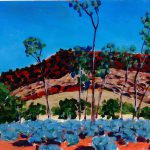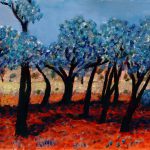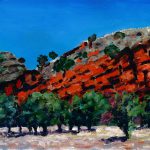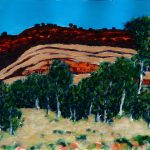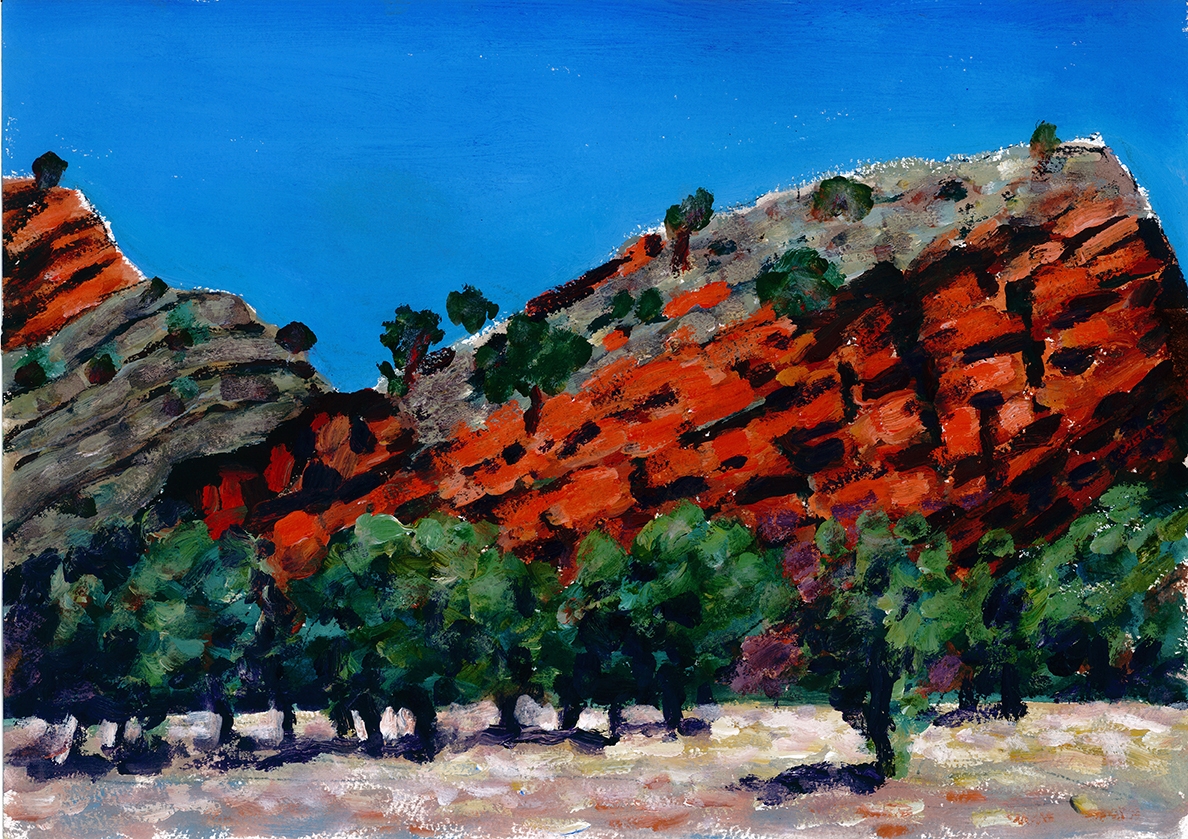
PAINTING WITH ACRYLICS IN THE HOT DRY AUSTRALIAN DESERT
by Jim Cobb
How times have changed.
It was adventurous to paint outdoors in the Australian Desert in 2009 using the Atelier Interactive acrylic paints which had just been released.
I was truly a pioneer, and pioneers or trailblazers suffer privations. In my case I decided to work wet-in-wet for outdoor sketches which normally take me 2 hours to execute, and I had to spray my palette and painting almost continuously with water to keep everything workable (as we all know, water-based paints dry very fast in hot, dry conditions).
This year I found myself in a comfort zone when I repeated the same process. My sprayer was charged with Unlocking Formula, and I was able to keep everything working effortlessly because Unlocking Formula simply rewets your painting when you want to keep going. When I wanted to make an overpainting layer, I simply exposed my painting to the rather vigorous sunlight and it dried very fast!
Oils used to have the advantage of being easy to work with outdoors; however, being hard to handle when the painting is finished is a big disadvantage if you are traveling and your painting is still wet.
When I use the Atelier Interactive combination of the Interactive paint plus Unlocking Formula spray, I have the same advantage as oil painters when working wet-in-wet, but I don’t have a transport problem to deal with. Of course while working wet-in-wet is a huge advantage with oils, I cannot over paint until days later. With Atelier Interactive I can over paint on location whenever I want, just dry my under painting for a layering technique.
Everyone who has used oils knows how pleasant working wet-in-wet is, but there are a lot of acrylic artists who are used to layering in short bursts because they cannot control the drying of their acrylic paint. I have made a short demonstration video compilation using still shots to show how wet-in-wet paintings develop. The subject, done from memory, is the big red rock of the mouth of Trephina Gorge near where our group was working during this desert trip to Alice Springs, AU. I hope the still shots make it easy to follow how a wet-in-wet painting can proceed and how easy it is to carry out. I have then followed up with images of the actual paintings done during the trip on “Plein Air”.
It is important to understand the influence of climate conditions.
Desert conditions are usually hot, dry, maybe windy, and of course you try to paint in the shade, but you could not find a more difficult test for Atelier Interactive’s wet-in-wet abilities.
If you live on the east coast of Australia, your local weather is often humid (if you have a smart phone you can check humidity before starting to paint). When it is over 80% all acrylic paints slow down significantly
Q: Does that make you wonder what happens if you use the Unlocking Formula?
A: Unlocking Formula is still useful, because it does not alter the drying speed of the painting, and can still be used to keep your paint wet in case you are interrupted or need a bit more time to work on it. In high humidity, whatever paint you are using can be dried quickly by using heat. A hair dryer is easy for smaller work. Direct sunlight is helpful, and if sunlight is not available you may simply have to wait maybe a day or so for your painting to dry if you do want to over paint. I think everybody who is using acrylic paint in humid places would have noticed this, but they may not have realized that humidity is the cause. Of course if you are working in an air conditioned studio, the moisture is extracted and you do not have any problems with humidity to consider.




